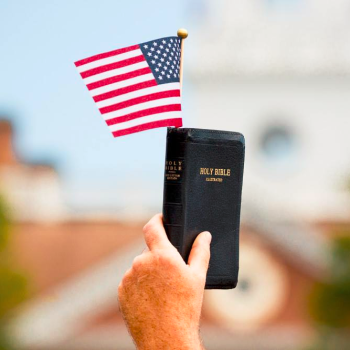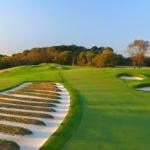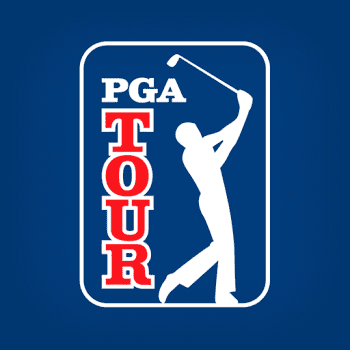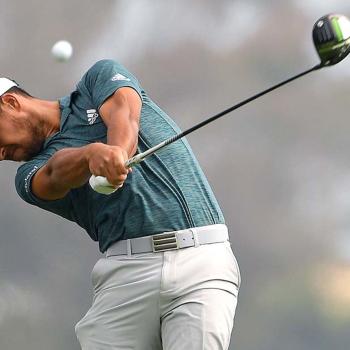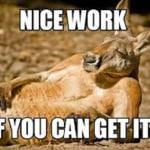Karsten Solheim first introduced his PING EYE irons in 1979. They were stainless steel, made with the investment cast process, and had the usual cavity in the back which enabled perimeter weighting. In 1981, Karsten substantially improved them and named these PING EYE2 irons. I then started playing PING irons for the first time in my PGA TOUR career. Karsten had finally made irons I believed were superior to other iron clubs made by equipment manufacturers for pro golfers, that is, except for one thing. He still had those tiny grooves on these EYE2 irons, just as he had on all of his prior stainless steel irons made by the investment casting process ever since the late 1960s. So, I was still telling Karsten that I thought he should have the grooves on these irons the maximum width the rules regulations allow for golf equipment, which is 1/16 of an inch. And the distance between the grooves must be no less than three times the width of the groove.
The way I understand it is that sometime after this, the chief engineer for the USGA, Frank Thomas, said to Karsten, “Have you seen the new regulation for grooves?” Karsten did not know about it. It was that the groove inside the club face no longer had to be V-shaped. The USGA did this because it was merely approving of the investment cast process, which necessarily resulted in a U-shaped groove. For several decades, the rule was that grooves had to be V-shaped. Iron clubs had been made by the cast iron process, and the grooves on them were V-shaped. They were made that way by stamping the groove on the cast iron club face.
I don’t know why, but in 1984, Karsten made new molds of his EYE2 irons with grooves that had the maximum width allowed. Was he now listening to a few of us Touring pros about that? But when you hit an iron shot with them, you often had to declare the ball unfit and take it out-of-play because those grooves “chewed up” the balls. That is, an iron shot would result in the ball cover having groove marks on it with rubber shavings hanging from those marks. Why was this happening? The edges of these EYE2 U-shaped grooves were very sharp. In fact, Touring pros playing EYE2s started asking the company that made the golf balls they played to put four dozen balls in their locker each week instead of the standard three dozen. Then those companies, especially Titleist, whose ball I played, started complaining to Karsten about his new EYE2 iron clubs, alleging they weren’t so groovy.
At some point, Karsten’s controversial grooves came to called “square grooves,” and that never changed. Yet, it was a misnomer. They weren’t square at all; they were U-shaped. The investment casting process could not make square grooves, just as it could not make V-shaped grooves.
So, in 1985 Karsten solved that problem by slightly changing his new EYE2 molds by rounding the edges of those sharp grooves. With those modified EYE2s, PING Touring pros no longer had a problem chewing up the balls. But some Touring pros started complaining that their fellow competitors who played these new PING EYE2 irons had an unfair advantage in tournaments because they could still put more backspin on the ball than the other pros could who played other iron clubs. Much of the time, pros regard that having the ability to impart more backspin on your iron shots is an advantage that will lead to lower scores.
But Karsten then made what I regard as a mistake. He had always abided by regulations in submitting his golf clubs with new designs to the USGA for approval. All clubs must conform to USGA regulations or they are popularly declared as “illegal.” And Karsten had submitted his EYE2 irons, with their larger U-grooves, to the USGA, and they were approved. But when he rounded those grooves, he did not submit them to the USGA and just went on with the manufacturing and selling them. He thought the difference was so minute, that it didn’t matter. The difference was indeed minute, but as it turned out it mattered a whole lot!
Due to increasing complaints by Tour pros, the PGA TOUR started testing these PING EYE2 irons with their rounded grooves. And they tested iron clubs made by other major golf club manufacturers in an effort to compare backspin results with the PING EYE2s. Their testing revealed that these EYE2 irons did indeed produce more backspin than the other iron clubs, and the difference was accentuated with shots hit from the rough or in wet conditions. Initially, the USGA did its own testing of these EYE2 irons, and because of it the USGA agreed with the PGA TOUR.
Then the USGA alleged that these grooves on the EYE2 irons were “nonconforming.” That means that they did not conform to the regulation of being no more than 1/16 inch (0.035″) in width. (And the distance between the grooves cannot be less than three times the width of the groove.) But at that time, USGA regulations for golf equipment did not specify the method by which grooves on iron clubs are to be measured. Karsten measured the groove on these EYE 2s from their vertical walls, which was exactly 1/16 inch. But the USGA measured the groove from the flat surface of the club face, which was slightly more than 1/16 inch. Everyone agreed that the difference was only .005 inch between the two methods of measuring. Karsten’s lawyers said this difference was “the width of a human hair.”
Karsten perceived that all of this negative reaction to his golf clubs would drastically hurt his business. Consequently, in August, 1989, Karsten sued the USGA and the Royal and Ancient Golf Club (R&A, in the UK) for $100 million on the charge of restraint of trade. That amount could be tripled, and punitive damages could be awarded. The U.S. court dismissed the R&A from the suit on the grounds that they didn’t do business in the U.S. Karsten Manufacturing dropped its suit in early 1990, settling with the USGA out-of-court because The USGA concluded that the difference in the grooves was inconsequential to the game.
A large majority of PGA TOUR pros thought otherwise. They believed they were better judges of that than were high-handicap amateur golfers on the USGA committee. TOUR Commissioner, Deane Beman, believed that the USGA had caved in due to public pressure and fear of losing the lawsuit. He therefore hired outside technicians to do extensive testing of both type grooves, and these tests proved that Beman and these pros were right, that accomplished golfers could shoot lower scorers in EYE2 type grooves on their iron clubs. Beman and most Touring pros believed that the PGA TOUR was seeking to “protect the game of golf.”
On December 1, 1989, Karsten Manufacturing and nine PGA TOUR pros who played EYE2 irons sued the PGA TOUR for $100 million. On January 1, 1990, the PGA TOUR declared that PING EYE2 irons henceforth would not be allowed in their competitions. In September, 1991, the PGA TOUR counter-sued Karsten Manufacturing for $100 million. That’s a total of three $100 million lawsuits, in which there also could have been punitive damages. Nothing like this had ever happened in the history of golf–“the gentleman’s game.”
Karsten had hired Leonard Decof, a prominent trial lawyer, to handle this case. Decof had a 50-year old law practice in Rhode Island. And he had argued several cases before the U.S. Supreme Court. The lead attorney for the PGA TOUR at that time was Tim Finchem, who later became our Commissioner. I remember at one players’ meeting on the Senior Tour, Tim informed us that this case had had more depositions, over 100, than any commercial U.S. case up to that time.
Emotions on the PGA TOUR were running very high about this. It seemed that most of our Touring pros were very upset with Karsten suing the PGA TOUR. We were told that if the suit went to trial, and Karsten won, it would result in serious financial injury to the PGA TOUR. Arnold Palmer uncharacteristically lambasted Karsten Solheim in the media, saying that if he, Arnold, had the power he would “destroy this man.” Jack Nicklaus spoke out against Karsten about this as well.
Nevertheless, it looked as though Karsten was going to win the suit if it went to trial. The media and golfing public clearly had sided with Karsten. That in itself could have proved to be a public relations nightmare for the PGA TOUR. Believe me, some of our Tour officials were increasingly worried about losing this case in court. And players were shocked when Commissioner Beman announced that the $45 million players’ retirement fund could be vulnerable in paying for damages if the Tour lost the suit.
But in 1993, six days before this biggest lawsuit in the history of golf was scheduled to go to trial, Karsten Solheim surprised even insiders by abruptly changing his mind and agreeing to settle this case out of court. And he didn’t demand any compensation from the plaintiffs. He only required that the USGA and PGA TOUR “grandfather” those particular EYE2 irons, made in 1985-1989, so that they were not illegal in USGA and PGA TOUR competitions.
Some people incorrectly speculated that the PGA TOUR and/or USGA waited until nearly the last minute before ending this controversy. Not at all. They were not in control. Karsten was. And he had been very determined all along to see the case go to trial. This “grooves controversy,” as it came to be called, is well documented in a chapter of the excellent book written by golfweek.com writer Adam Schupak entitled Deane Beman: Golf’s Driving Force (2011).
I know why Karsten suddenly changed his mind and settled out of court. But I don’t feel at liberty to tell, so I never will.






